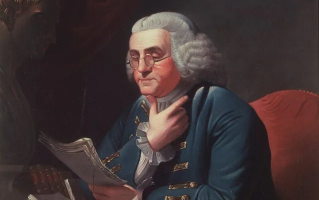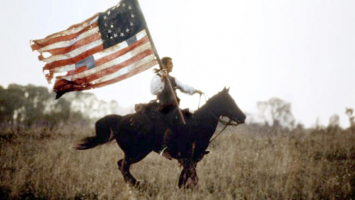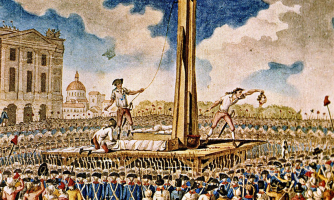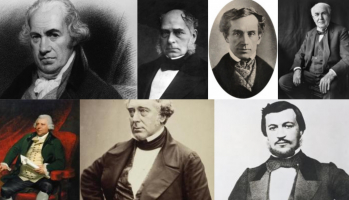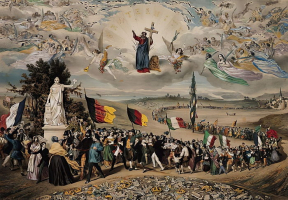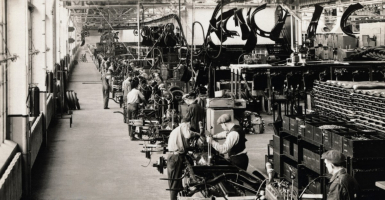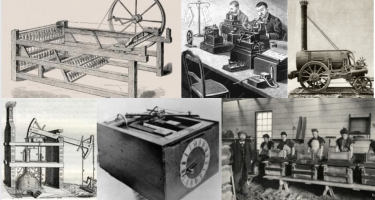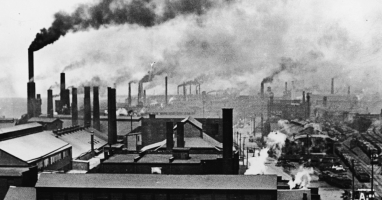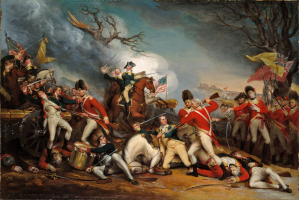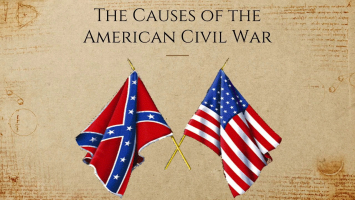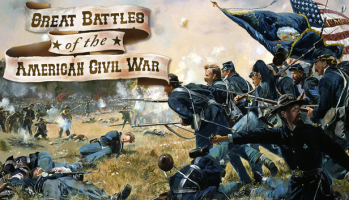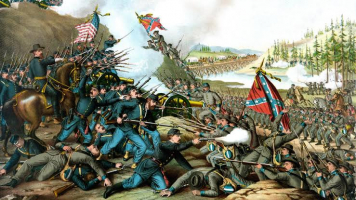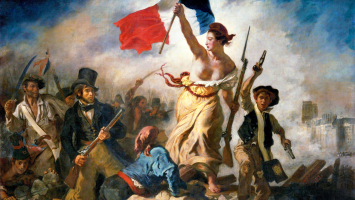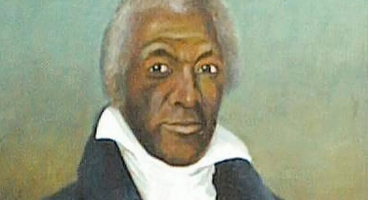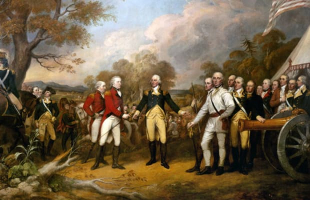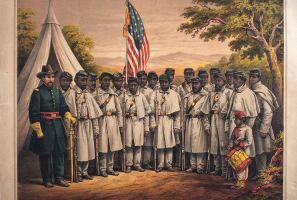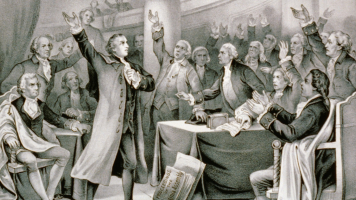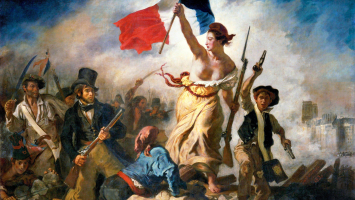Top 12 Major Events of the American Revolution
The American Revolution was a successful insurrection of the Thirteen British colonies in North America against the British Empire in the second part of the ... read more...18th century. From the conflicts of the Stamp Act of 1765 to the signing of the Treaty of Paris, explore the timeline to learn about the major events of the American Revolution that occurred during this period of American history.
-
Between 1756 to 1763, the Seven Years' War was fought between a British-led alliance and a French-led coalition. Around the same period in America, the French and Indian War erupted, pitting British territories in America against New France, a region occupied by France. Even though the British won both wars, they did so at a tremendous cost. By taxing the Thirteen Colonies in America, Britain attempted to recover the expense of its standing army in America as well as reduce its financial burden.
The Stamp Act of 1765 was approved by the British Parliament in March of that year. This was the first time the colonies were subjected to direct British taxation. Many printed materials, including legal documents, periodicals, newspapers, and even playing cards, were required to be printed on London-stamped paper with an embossed revenue stamp under the Act. The colonists objected to the taxes not because they were excessive, but because they were imposed by a British Parliament that they had no representation. One of the main grounds of contention between colonists and Britishers was the issue of "no taxation without representation."
Prominent figures such as Benjamin Franklin and members of the Sons of Liberty, an independence-minded society, contended that the British parliament lacked the jurisdiction to levy an internal tax. The resulting violence drew widespread attention as a result of the public outcry. Threats were made against tax commissioners, and some of them resigned out of fear; others just failed to collect any money. The "Stamp Act would have to be implemented by force," Franklin wrote in 1766. Parliament, unable to do so, repealed the Stamp Act a year later, on March 18, 1766. The seeds of strife that would lead to the major events of the American Revolution, on the other hand, had been sowed.
Date: March 22, 1765
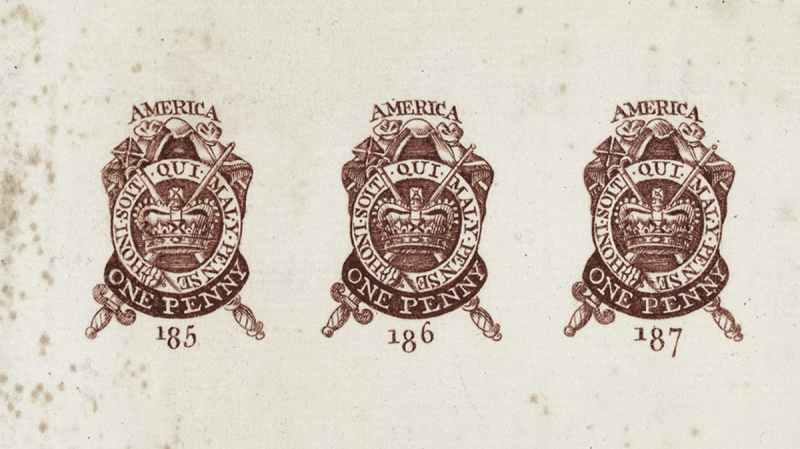
www.history.com NBC News Learn-youtube.com -
A set of British laws known as the Townshend Acts were passed in 1767 and levied taxes on goods brought into the American colonies. However, American colonists who were not represented in Parliament viewed the Acts as an abuse of power. The British sent troops to America to implement the unpopular new laws in the lead-up to the American Revolutionary War, escalating tensions between Great Britain and the American colonies.
The American Colonies Act 1766, often known as the Declaratory Act, took effect the same day that the Stamp Act was repealed. It said that the British Parliament had the same jurisdiction in America as it had in the United Kingdom and that the laws made by the British Parliament were obligatory in the American colonies. The British government's Chancellor of the Exchequer, Charles Townshend, advocated that "external" import tariffs be implemented in America instead of internal taxes. The Townshend Acts were enacted as a result. Glass, lead, paints, paper, and tea, all of which had to be imported from the United Kingdom, were subjected to an indirect tax. The Townshend Acts were also controversial, and colonies retaliated by boycotting all British products that were taxed.
The Townshend Acts were similarly unpopular, and colonists responded by boycotting any British products that were taxed and staging large-scale protests. In March 1770, the British Parliament removed most of the Townshend Acts' levies, but the import fee on tea was kept. This was done to show that, in line with the Declaratory Act, Parliament had the jurisdiction to tax the colonies. As a result, the struggle for taxing power continued to deteriorate the relationship between Britain and its American colonies, it's one of the major causes of the American Revolution occur.
Date: June 29, 1767
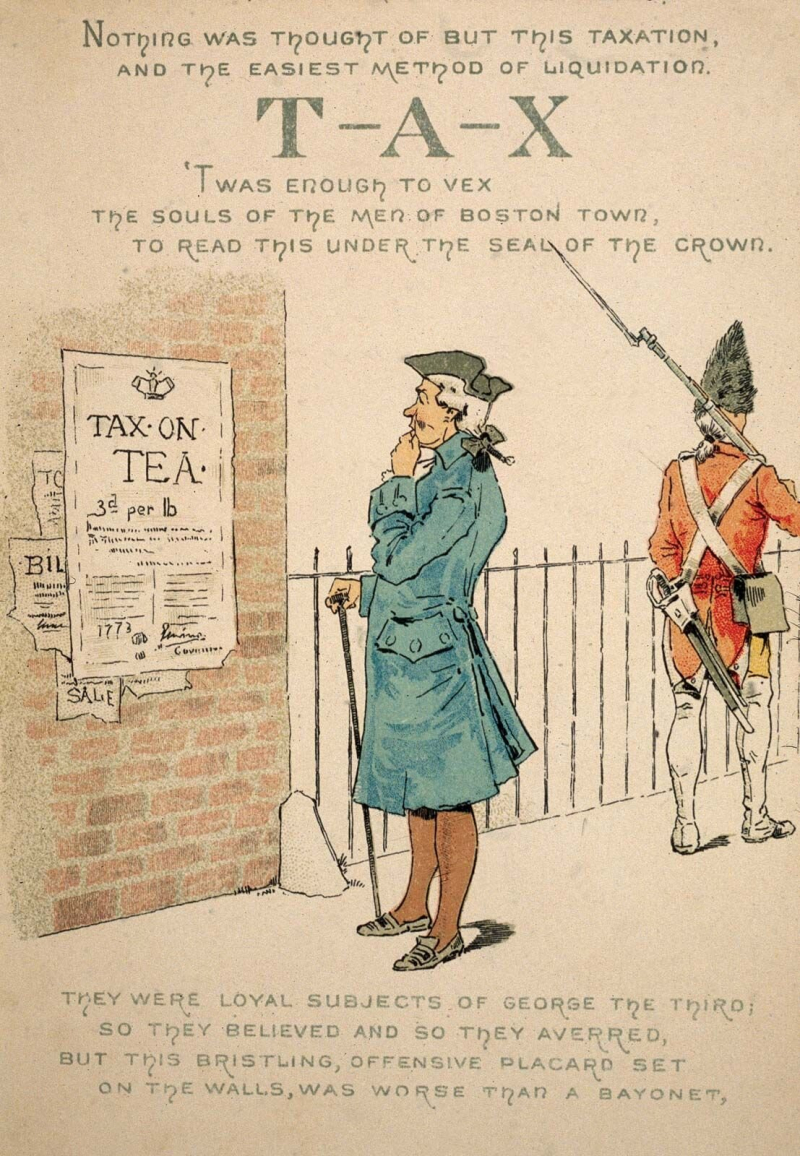
www.history.com Reading Through History-youtube.com -
On March 5, 1770, a bloody riot known as the Boston Massacre took occurred on King Street in Boston. It started as a street skirmish between American colonists and a lone British soldier but swiftly turned into a bloodbath. The anti-British feeling was stoked by the fight, which opened the path for the American Revolution.
On June 10, 1768, British customs authorities in Boston, Massachusetts, confiscated the sailing ship HMS Liberty for alleged smuggling. There was a disturbance as a result of this, and the customs officials were forced to escape. As a result, the British army's 14th and 29th regiments were stationed in Boston to support crown-appointed authorities. The presence of these troops heightened tensions in Boston, which were already high. A British Private Hugh White was encircled by Bostonians on March 5, 1770, following an incident with a wig apprentice. maker's Seven British troops using bayonets made their way through the mob to save White.
A swarm of roughly 200 Bostonians encircled them, throwing snowballs, oyster shells, and garbage at them and daring them to shoot. Amid the chaos, British soldiers opened fire on the crowd despite not being instructed to do so. Eleven individuals were hit, three of whom died on the scene and two of whom were critically wounded. This incident inspired the moniker "Boston Massacre." Six of the eight soldiers were found not guilty, while the remaining two received reduced terms. The Boston Massacre is considered one of the major causes of the American Revolution War because it significantly turned colonial sentiment against King George III and British Parliamentary power.
Date: March 5, 1770
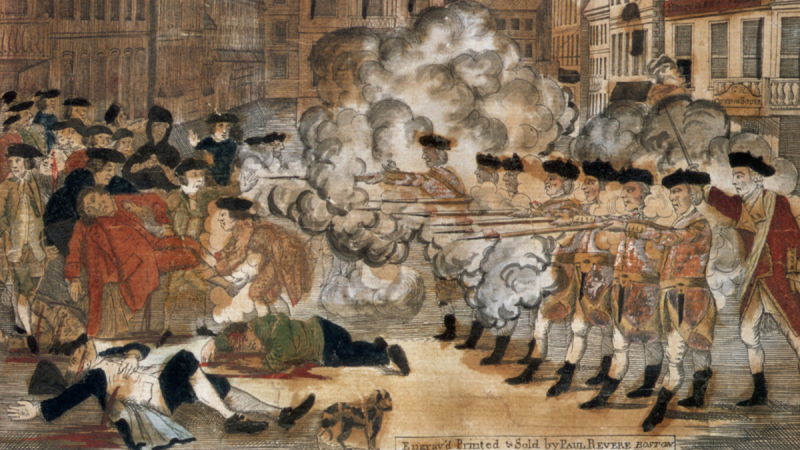
learnodo-newtonic.com American Battlefield Trust-youtube.com -
The Tea Act was enacted by the British Parliament on May 10, 1773, to assist the financially suffering British East India Company. The Act authorized the Company to sell tea in American colonies without paying any taxes other than the Townshend Acts import charge. Smuggled Dutch tea made up more than 80% of the tea consumed in America at the time, and the Act harmed American merchants who imported tea from the Netherlands. The colonists staged protests against the Act and rallied resistance to the tea's distribution. Tea was shipped by the East India Company to Boston, New York, Philadelphia, and Charleston.
The Boston Tea Party is typically attributed to the colonists' dissatisfaction with an unjust tea tax. That is just partially correct. The Tea Party was a protest against a levy enacted during the French and Indian War to help collect finances. But the levy was also a political power play on Parliament's part, intended to reclaim authority over the colonies, as well as an economic choice to bail out the bankrupt East India Company, a vital link in the English trade chain.
Protesters in the other three colonies, except Boston, stopped the tea from landing. The Royal Governor of Boston, Thomas Hutchinson, however, refused to give in to the pressure. On December 16, 1773, a group of men headed by Samuel Adams boarded East India Company ships, some dressed as Native Americans, and threw all 342 chests of tea valued at £10,000 into Boston Harbor. The Boston Tea Party was an important occurrence leading up to the American Revolutionary War. As a result, it became a defining moment in American history.
Date: December 16, 1773
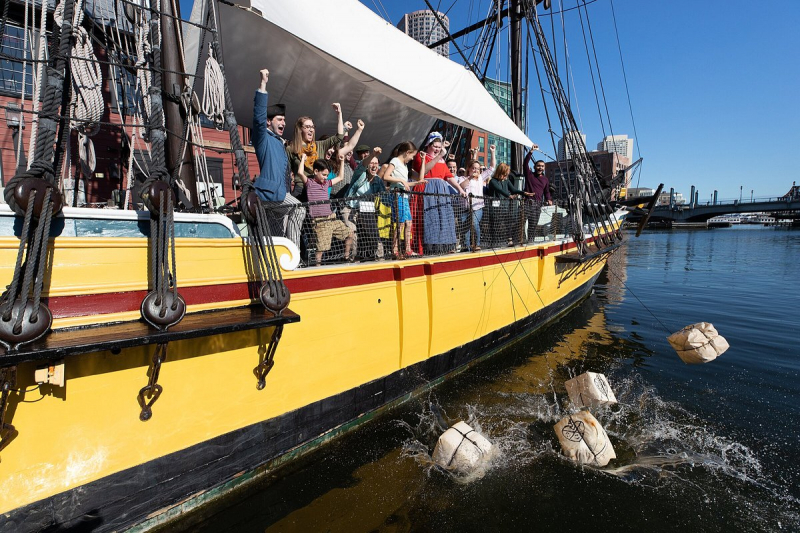
www.history.com Simple History-youtube.com -
The British government responded to the Boston Tea Party by using a divide-and-conquer policy to separate troublesome Boston from the other colonies, which Parliament felt were simply following Boston's radicals. The Coercive Acts, which were intended specifically at Boston and envisioned as punishment for its strong opposition to British policy, were approved by Parliament in the spring of 1774. Boston, the core of anti-British sentiment, was to be cut off from the other colonies as a result of the Intolerable Acts. The colonists replied to the Intolerable Acts by holding the First Continental Congress to deliberate and establish a united front against the British. The Coercive Acts, often known as the Intolerable Acts in the colonies, were made up of four independent legislative actions.
The first was the Boston Port Act, which shut down the port until the colonists compensated for the tea that had been destroyed. The second was the Massachusetts Government Act, which changed the state's charter, putting it under British rule and prohibiting town assemblies without prior consent. The third was the Administration of Justice Act, which permitted royal officers accused of crimes committed in Massachusetts to be prosecuted in Great Britain.
The Quartering Act, which applied to all colonies, was the last and most contentious Act. It authorized a governor to put troops in vacant homes and structures in cities. Even though colonists were not required to board troops in their homes, they were required to pay for the cost of lodging and feeding the soldiers. These Acts were seen by the colonies as a breach of their constitutional rights and a danger to British America's liberty. As a result, the Acts fuelled anti-British sentiment and united the colonies in favor of Massachusetts.
Date: May 20, 1774
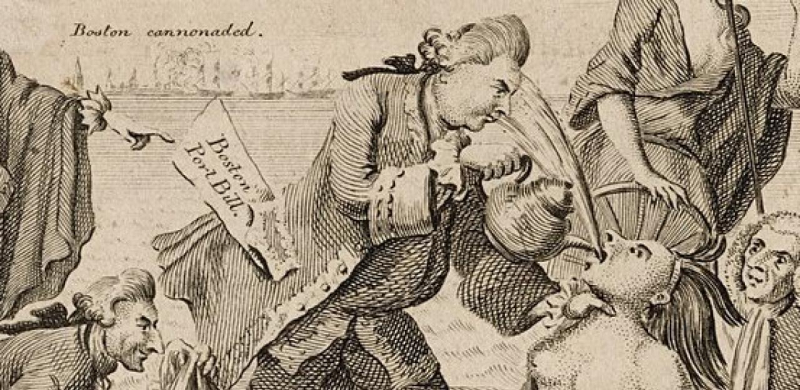
www.history.com Reading Through History-youtube.com -
Considered one of the major events of the American Revolution because they were the first military engagements of the American Revolutionary War, the Battles of Lexington and Concord are historically significant. A British army led by Lieutenant Colonel Francis Smith was dispatched to Concord, some 15 miles from Boston, to confiscate the Patriots' firearms. The Patriots, however, had transferred the supplies out of town since they were aware of the British intention. On the way to Concord, the first shots were fired at a brief conflict in Lexington. Then, near Concord's North Bridge, a British company of roughly 100 soldiers clashed with around 400 American patriots. The British soldiers withdrew to rejoin the main army, despite being outmanned.
After finishing their hunt for military supplies, the British soldiers began their return march to Boston, while additional militiamen continued to arrive from the surrounding towns. As the regulars marched back into Boston, gunfire erupted once more between the two sides and persisted throughout the day. Lt. Col. Smith's mission was rescued by reinforcements headed by Brigadier General Hugh Percy, the future Duke of Northumberland, who was given the courtesy title Earl Percy at the time. In a tactical withdrawal, the united army of around 1,700 men marched back to Boston under intense fire and ultimately reached the safety of Charlestown. The gathered men then began the siege of Boston by blockading the small land routes to Charlestown and Boston.
The British lost 273 losses in the fights compared to 95 for the Americans, making it a victory for the Americans. Following the Battles of Lexington and Concord, the British were forced to depart Boston and sail to Nova Scotia following an 11-month siege.
Date: April 19, 1775
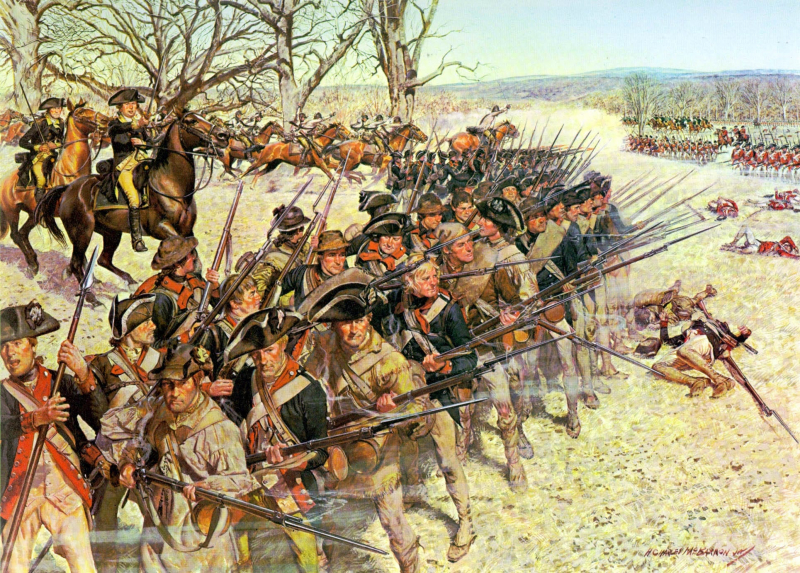
www.history.com BattleStack-youtube.com -
In late 1775, British attacks on American coastal towns contributed to a general worsening of ties between Britain and her American colonies. Although the Revolutionary War began with the battles of Lexington and Concord, Randall claims that it was uncertain from the outset if the southern colonies, whose interests differed from those of the northern provinces, would be willing to fight for independence. The burning of the two ports was used by rebel leaders to argue that colonists needed to join together to survive against a merciless adversary and embrace the desire for independence, a mentality that would eventually contribute to their success.
The southerners were completely reliant on the English to buy their products, and they didn't trust the Yankees. The Puritans in New England felt the southerners were indolent. But that was before the British naval bombardments and burnings of the coastal cities of Falmouth, Massachusetts, and Norfolk, Virginia, encouraged the colonies to unite. Northerners had to confront "the worry that the British would do anything they pleased to them" at Falmouth, where locals had to collect their belongings and leave for their lives.
Similarly, the sight of Norfolk's wooden houses engulfed in flames following a seven-hour naval bombardment stunned southerners, who were also aware that the British were giving African Americans freedom in exchange for taking up arms on the loyalist side. "Norfolk stoked concerns of a slave revolt in the South," Randall claims. The destruction of the two ports was used by rebel leaders to argue that the colonists needed to join together for survival against a merciless adversary and embrace the necessity for independence—an attitude that would eventually lead to their success.
Date: October 1775 – January 1776
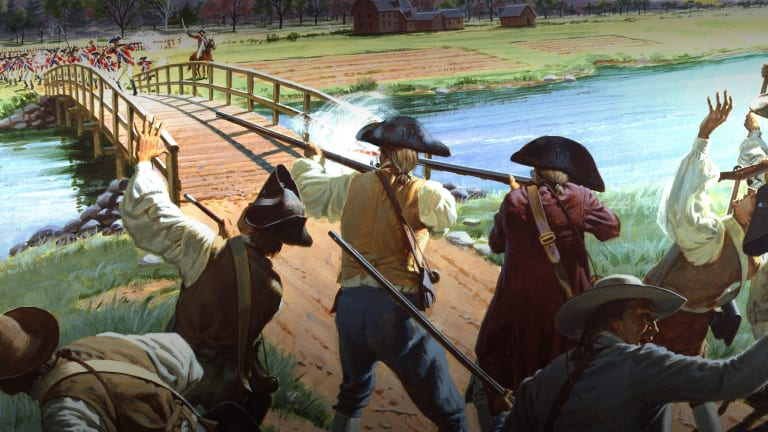
www.history.com 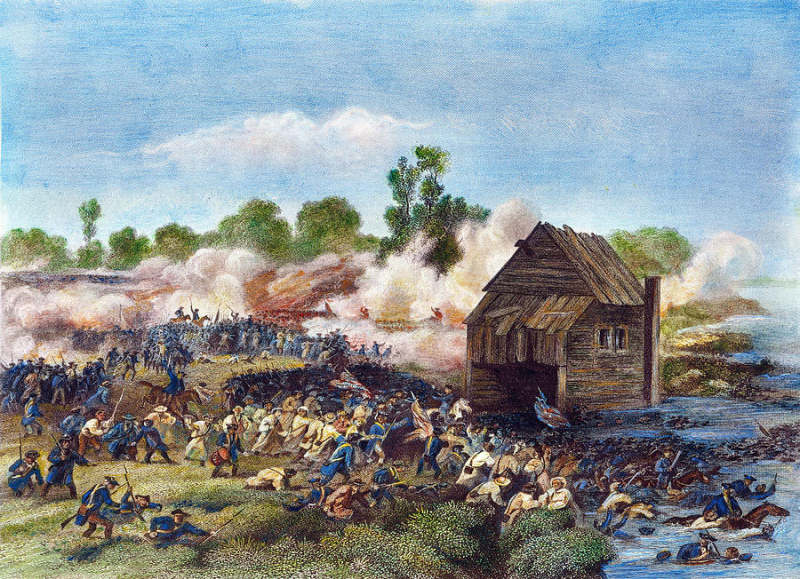
www.history.com -
As soon as the conflict broke out, the Patriots overturned the existing governments in the thirteen colonies, shut down courts, and expelled British officials. In each state, new constitutions were drafted to replace royal charters, and it was stated that they were states, not colonies. Nine Provincial Congresses were ready for independence by June 1776, and the other four were not far behind. The Second Continental Congress overwhelmingly adopted the Declaration of Independenceon July 4, 1776, at a meeting at the Pennsylvania State House in Philadelphia, Pennsylvania.
It stated why the Thirteen Colonies at war with Britain saw themselves as thirteen independent sovereign entities, no longer under British dominion. One of the most important papers in history is the United States Declaration of Independence. Its second statement, in particular, has been dubbed "one of the best-known sentences in the English language" and is frequently used about human rights. The Declaration of Independence influenced numerous other countries' declarations of independence, most notably the French Declaration of Man and Citizen Rights (1789).
The United States Declaration of Independence was mostly written by Jefferson, who had already demonstrated his ability as a political philosopher and polemicist in his 1774 book. A Summary View of the Rights of British America. He wrote the initial draft at the request of his fellow committee members. The members of the committee made a few minor revisions, as well as expanded the list of complaints leveled against the monarch. A criticism of the British people, a reference to "Scotch & foreign mercenaries" (there were Scots in the Congress), and a denunciation of the African slave trade were all deleted by the Congress (this being offensive to some Southern and New England delegates). The declaration was signed by 56 Founding Fathers from New Hampshire, Massachusetts Bay, Rhode Island, and Providence Plantations, Connecticut, New York, New Jersey, Pennsylvania, Maryland, Delaware, Virginia, North Carolina, South Carolina, and Georgia, as well as congressional representatives from New Hampshire, Massachusetts Bay, Rhode Island, and Providence Plantations. The Declaration of Independence became one of the most extensively disseminated and reproduced texts in American history.
Date: July 4, 1776
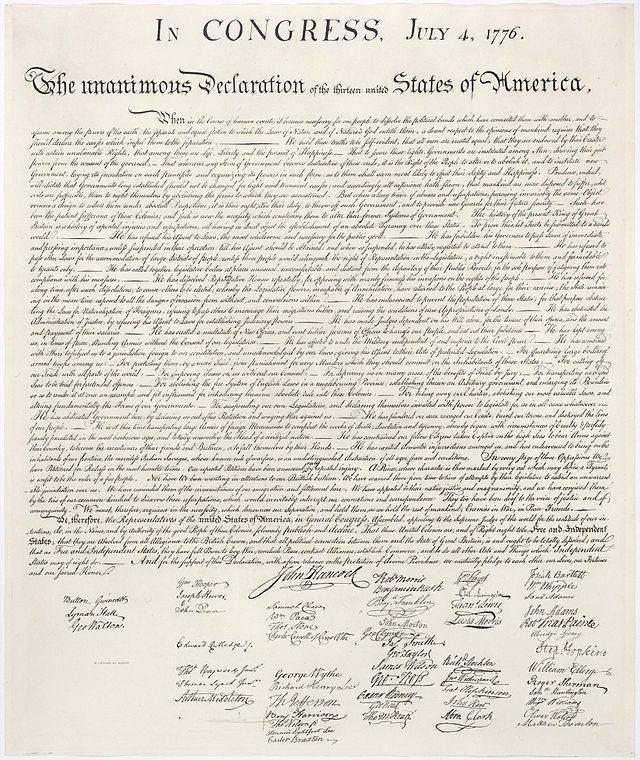
www.history.com Pursuit of History-youtube.com -
The Battle of Trenton was a small but crucial American Revolutionary War battle that took place in Trenton, New Jersey, on December 26, 1776. General George Washington led the main bulk of the Continental Army against Hessian troops garrisoned at Trenton after crossing the Delaware River north of Trenton the night before. Almost two-thirds of the Hessian army was captured after a quick action, with the Americans suffering only minor casualties.
The Americans had suffered a series of setbacks before to this engagement, forcing them to withdraw across New Jersey and into Pennsylvania. The Continental Army's morale was at an all-time low, and many troops had deserted. At this point, George Washington, the Continental Army's Commander-in-Chief, devised a daring plan to assault the enemy soldiers stationed at Trenton, New Jersey. The legendary crossing of the Delaware River, which was completed "with almost great difficulty," was made first by the American soldiers. They then overcame the German missionaries at Trenton in just an hour, killing over 100 people.
The Americans only lost two men and were injured by five others. More crucially, over 900 men were apprehended, along with supplies, weapons, and ammunition. With the seized men and supplies, the American force crossed the Delaware River and returned to Pennsylvania. The stunning American victory at Trenton improved the Continental Army's morale, emboldened colonial rebels, and resulted in additional recruits joining the army. Despite the modest number of soldiers that participated in the combat, the victory emboldened patriots and supporters across the newly founded United States. The army appeared to be on the point of collapsing a week ago, with the success of the unfolding revolution in doubt. Soldiers were encouraged to serve longer and fresh recruits were recruited to the ranks as a result of the stunning triumph.
Date: December 26, 1776
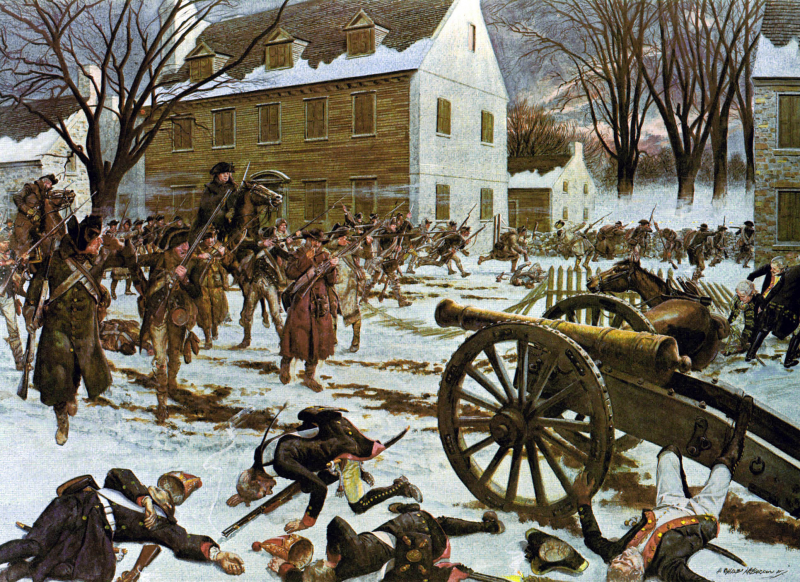
www.history.com HISTORY-youtube.com -
The Battles of Saratoga (September 19 and October 7, 1777) culminated in the Saratoga campaign, handing the Americans a decisive victory against the British during the American Revolutionary War. The aim was to conquer Albany, New York, and British General John Burgoyne led a massive invasion army southward from Canada in the Champlain Valley, expecting to link up with a comparable British force coming northward from New York City and another British force marching eastward from Lake Ontario. The southern and western armies never arrived, and Burgoyne was trapped by American forces 15 miles (24 kilometers) from his goal in upstate New York. He fought two engagements on the same land 9 miles (14 kilometers) south of Saratoga, 18 days apart.
General John Burgoyne designed a strategy to separate New England from the middle and southern provinces since the region was proving difficult for the British. His regiment was to march down the Hudson Valley from Canada to Albany, while William Howe, the British Army's Commander-in-Chief in America, was to march up the Hudson Valley from New Jersey. Even though Howe was successful in capturing Philadelphia, he was unable to help Burgoyne. The Battles of Saratoga were the culmination of the British plan. The Fight of Freeman's Farm, the first battle of Saratoga, was a slight triumph for Burgoyne, who occupied Freeman's Farm. Even though Burgoyne's army lost about 600 casualties, the American losses were just around half that.
The American army easily overcame the British soldiers in the second battle of Saratoga, known as the Battle of Bemis Heights. The British suffered 500 casualties, while the Americans only suffered 200. Burgoyne's army was quickly besieged at Saratoga, and on October 17 he surrendered his whole force of 5,800 men. The sweeping victory gave France faith in America's ability to win the war, resulting in the formation of the official Franco-American alliance in 1778. The Battles of Saratoga are regarded as the turning point of the American Revolutionary War as a result of this.
Date: September 19 & October 7, 1777
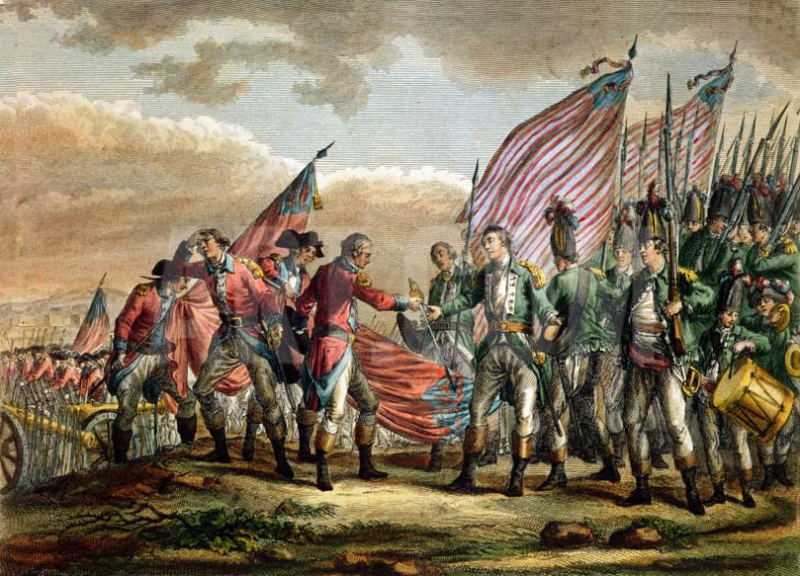
www.history.com History Heroes-youtube.com -
The Siege of Yorktown, also known as the Battle of Yorktown, the Yorktown surrender, or the German battle (due to the presence of Germans in all three armies), took place in Yorktown, Virginia, from September 28, 1781, to October 19, 1781. It was a decisive victory by a combined force of American Continental Army troops led by General George Washington and Gilbert du Motier, Marquis de Lafayette, and French Army troops led by Comte de Rochambeau over British Armored.
The American army and its French allies gathered near New York City on July 6, 1781. On August 19, 3000 American troops led by George Washington and 4000 French troops led by Comte de Rochambeau marched from Newport, Rhode Island, to Yorktown, Virginia. During this well-publicized march, Washington sends out forged messages to fool British Commander-in-Chief Henry Clinton into thinking his army was about to assault New York. This persuaded Clinton that Lord Cornwallis's position at Yorktown was secure. On September 28, Washington completed the encirclement of Yorktown, launching the siege against a British force of 9,000 men.
Cornwallis raised the white flag on October 17 after being bombarded nonstop by Franco-American forces, with little chance of reinforcements and insufficient artillery ammunition and food. The siege took place over 20 days. There were 88 Franco-Americans dead and 301 injured. The British lost 156 troops, 326 were wounded, and 70 were missing during the battle. More crucially, Cornwallis' whole surviving army of over 7,000 men had to be surrendered. The Siege of Yorktown was the American Revolutionary War's final significant engagement. It compelled the British to negotiate a cease-fire.Date: September 28 – October 19, 1781
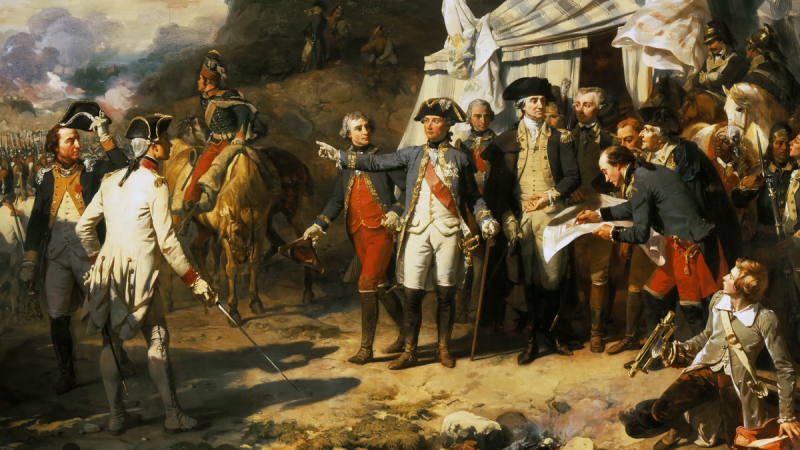
www.history.com Reading Through History-youtube.com -
Lord North, along with the rest of Parliament and King George III, knew at that point that success over the Thirteen Colonies was not certain. In reality, success would have necessitated far more troops, resources, and money than Parliament could provide. Rather than sending more soldiers over the water to North America, British delegates were dispatched to France to begin negotiations with the US. The Treaty of Paris was signed two years later on September 3, 1783, effectively ending the Revolutionary War. With the signing of the Peace of Paris accords in 1783 and 1784, the American Revolutionary War was formally over. The Treaty of Paris, signed by representatives of King George III of Great Britain and delegates of the United States of America on September 3, 1783, was the most important of them.
The United States' status as a free, sovereign, and independent The United States was recognized in article 1 of this treaty. The Treaty of Paris established the borders between the British Empire and the United States of America in North America, among other things. In addition to Tobago in the West Indies and Senegal in West Africa, France gained two tiny colonies as part of the Paris Peace. Despite the unsolved boundary difficulties, the United States reaped the greatest advantage of the treaty's signatories, establishing the independence of The United States from European powers. Despite the loss of its American colonies, Britain's worldwide dominance grew as a result of the early industrial revolution's economic expansion. The victory came at a huge financial cost for France, and attempts to remedy the financial problem would eventually lead to the French Revolution.
The Treaty of Paris established the borders between the British Empire in North America and the United States of America, among other things. France won two little colonies, Tobago in the West Indies and Senegal in West Africa, as a result of the Paris Peace; Spain recovered control of Menorca and Florida; while the Dutch gained nothing of considerable significance.
Date: September 3, 1783
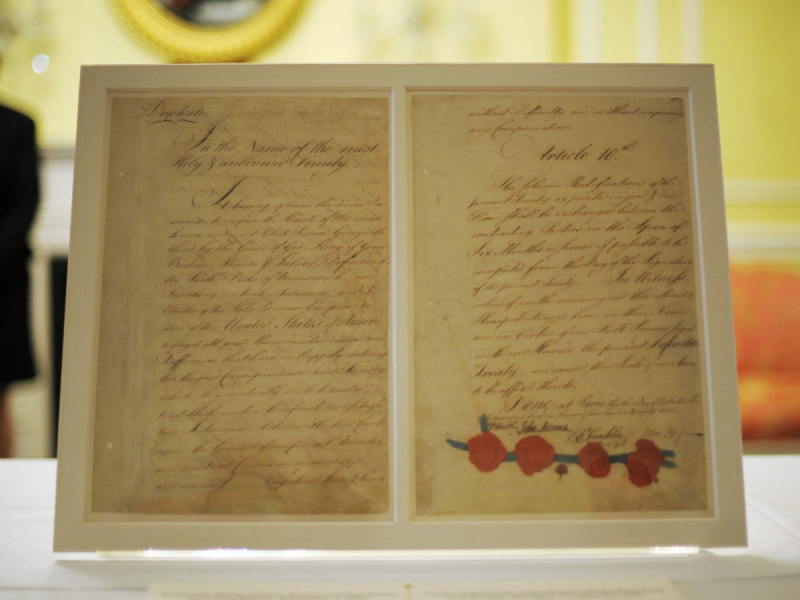
www.history.com Reading Through History-youtube.com














